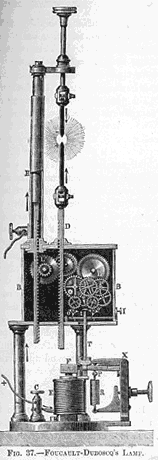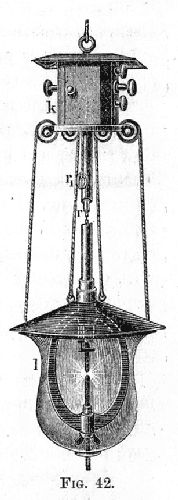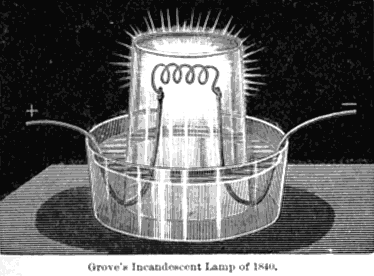Arc Lights
Today, let's turn on the first electric lights. The University of Houston's College of Engineering presents this series about the machines that make our civilization run, and the people whose ingenuity created them.
If I say "light bulb," you'll probably think, "Edison." Yet the idea of electric lighting was around for hundreds of years before Edison, and it really got rolling just after 1800 -- almost 80 years before Edison.
I should explain that two different kinds of electric lamps competed with each other through the 19th century. One was the incandescent lamp -- where light was created by passing an electric current through a filament. The other was the arc light.
The brilliant electro-chemist Sir Humphry Davy was probably the first to give us lights of both kinds. The 22-year-old Davy was made a lecturer at the new Royal Institution in London in 1801. He was a dazzling speaker, and his lecture-demonstrations soon became major social events in London.
In an 1802 lecture, he showed that he could cast light by passing an electric current through a platinum strip. In an 1809 lecture, he imposed a large voltage across an air gap between two carbon electrodes and created the first arc lamp.
Commercial arc-lighting systems followed three decades later in England. For a long time, arc-lighting was more showy than practical. These systems were just getting good when Edison came along.
Meanwhile, in 1820, the French inventor de La Rue made a successful incandescent lamp using a platinum coil in an evacuated glass tube. And in 1840 the Englishman Grove used similar lamps to illuminate a whole theater. But we're told that the theater lighting was dim, and its cost ran to several hundred pounds per kilowatt-hour.
Many, many more incandescent lamps followed, and in 1878 an inventor named Joseph Swan made an evacuated carbon-filament lamp three years before Edison did, and he managed to get some patent protection in place before Edison duplicated his feat.
When Edison finally installed a complete incandescent lighting system on the steamship Columbia in 1880, he provided cheaper, longer-lasting bulbs than anyone else had, in a commercially viable lighting system -- complete with an effective electrical supply. To get around Swan, Edison simply took the fellow in as a business partner. Edison's real strength lay in his tenacity in fully developing an idea -- all the way to the marketplace.
But we owe a large debt of gratitude to those marvelous, inventive, too-often-forgotten people who came up with the first electric lights.
I'm John Lienhard, at the University of Houston, where we're interested in the way inventive minds work.
(Theme music)
This story is told in many places. A very good summary is given in the Encyclopaedia Britannica under the word lighting.
For more on one particular early electric lighting system, namely limelight, see Episode 1268.
A revised and expanded version of this episode is found in Episode 1330.


(From Arc and Glow Lamps, 1886)
Two typical 19th century arc lights

(From Evolution of the Electric Incandescent Lamp, 1889)
Grove's Incandescent Lamp, made 40 years before Edison's